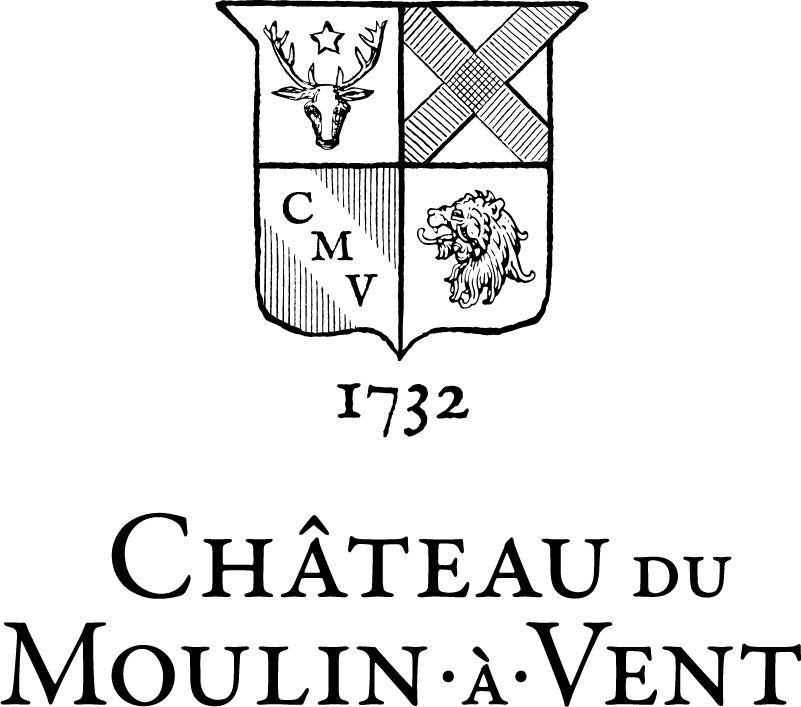Château du Moulin-à-Vent, Moulin-à-Vent `La Rochelle`


Vintage: 2021
| Vintage | Product Code | Format | Closure | Availability |
|---|---|---|---|---|
| 2021 | MV104B21 | 6 x 75 | Natural Cork | Available |
Producer
Château du Moulin-à-Vent may be an 18th-century property, but its sights are firmly set on Beaujolais's future. Since taking over the estate in 2009, Jean-Jacques Parinet and his son Edouard have overhauled their vineyards, converting them to organic, with biodynamic practices and focusing on improving soil health.
“We believe that an organic approach is best, not just for the health of the vines and soil but also to mitigate against climate change”, explains Edouard, “as we experience increasingly extreme conditions, we have seen that organic viticulture has helped with consistent ripening.”
Château du Moulin-à-Vent’s vines are, on average, 65 years old, planted on 220-million-year-old eroded pink granite soils. Constant winds help retain acidity and freshness in the final wines. Each site is planted at approximately 10,000 vines per hectare, resulting in low yields of between 20 to 35 hectolitres per hectare. This starkly contrasts the official minimum requirements of the Moulin-à-Vent appellation: 6,000 vines per hectare and yields of 56 hectolitres per hectare. Massal selection is also a key factor:
“Despite climate change, I believe that Gamay still has a very bright future in Beaujolais, and we are working hard to keep the original DNA of Gamay from Moulin-à-Vent”, explains Edouard, “We have had our own massal selection since 2015, meaning we’re now able to replant whole vineyards with our own cuttings. I believe this is also a key change that’s helping preserve the future of our vineyards.”
The result of this careful vineyard management is remarkable concentration in the Château du Moulin-à-Vent grapes. Winemaking is adapted to the specifics of each vintage and site by varying the percentage of whole bunch used in the fermentation, the length of maceration on the skins and the amount of time each wine ages in French oak barrels. The château has gradually reduced its use of new oak in recent years, allowing the purity of fruit to shine through, and now has a collection of over 100 barrels, on average on their sixth use, housed in its 16th-century cellar dug into the granite rock below.
The Moulin-à-Vent is a blend of three sites: ‘Moulin-à-Vent’, ‘La Roche’ and ‘Les Thorins’. The ‘Champ de Cour’ is sourced from vines planted on granite soils at an elevation of 220 metres, where windy conditions give an elegant freshness to the wine. The ‘La Rochelle’ is arguably the top single vineyard in Moulin-à-Vent, planted at an elevation of 280 metres and boasting over 80 year-old vines. These low-yielding vines create intensely concentrated wines that only get better with time.
Vineyards
The La Rochelle vineyard is 4.2 hectares and is situated at the top of a hillside at 280 metres above sea level. The soils are more shallow than those of the Champ de Cour vineyard with a mixture of granite, sand, clay and elements of manganese and iron oxides. The vines are 85 years old, this vine age coupled with south facing exposure and constant cooling winds around harvest time, means that the resulting berries are small with beautiful concentration and finesse. Yields are exceptionally low - around 13 hectolitres per hectare. The vineyards are farmed following both organic and biodynamic practices and will be officially certified organic from the 2024 vintage.
Vintage
Spring frosts across Beaujolais in 2021 meant that yields were significantly reduced. Beautiful weather conditions in August, however, allowed the grapes to reach excellent levels of ripeness with bright aromatics and refreshing acidity. The harvest took place in late September. Though quantities were down, the quality of the grapes harvested was excellent and the wines of 2021 are defined by freshness and finesse.
Vinification
Once at the winery, approximately 65% of the Gamay bunches were destemmed and the rest were left as whole clusters. Fermentation took place in stainless-steel tanks with one pump-over per day. Half of the wine was then aged in used French oak barrels for nine months, the remaining 50% was kept in stainless-steel tanks. After the final blend was assembled, it spent a further nine months in stainless-steel before bottling.
Tasting Notes & Technical Details
This wine is bright ruby in colour. On the nose, vibrant aromas of cherry, violets and spice are married with subtle hints of sage and gunflint. Elegant on the palate with structured tannins, fresh acidity and an impressively long finish.
Alcohol (ABV)
13%
Acidity
4.82 g/l
pH
3.65
Other wines from this producer
Producer | Wine | Product Code | Features | Style | |
|---|---|---|---|---|---|
| Château du Moulin-à-Vent | Moulin-à-Vent | MV101 | R | Factsheet | |
| Moulin-à-Vent `Champ de Cour` | MV103 | R | Factsheet |